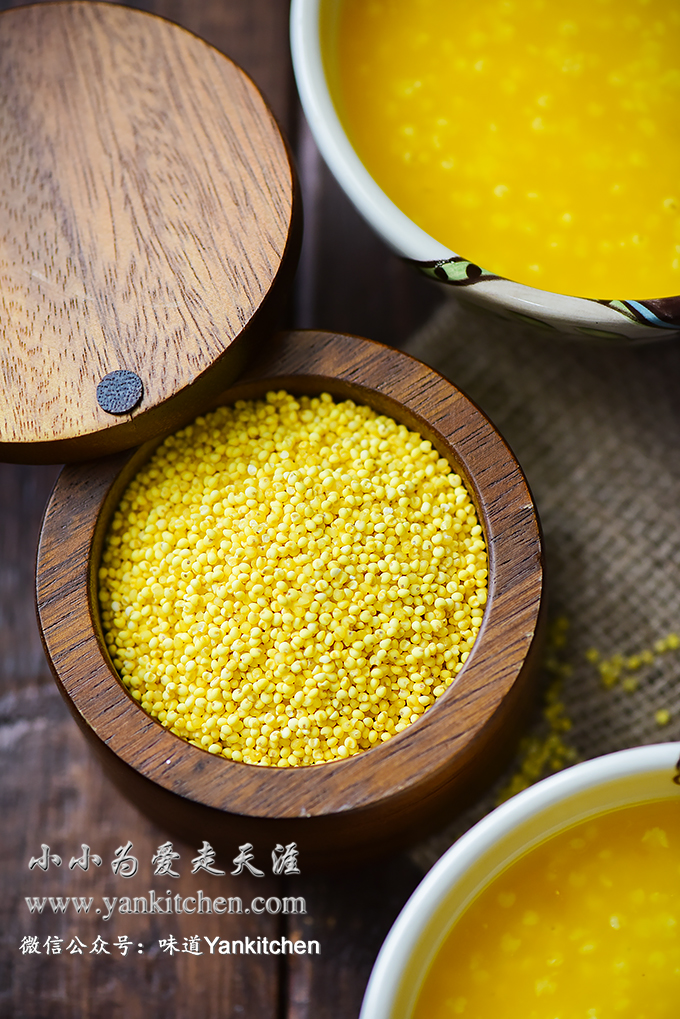中文菜谱: 南瓜糯小米粥
Porridge, also known as congee, has a long history in China. It was invented when the food was scarce and very limited. People added a lot of water to the pot with very little grains like rice, barleys, or millets. The porridge cooked this way was thin, bland and tasteless. But it fed a lot of hungry bellies when time was hard.
Nowadays, people continue to cook porridge for its health benefits. By adding different ingredients, porridges can be quite nutritious and tasty too! And the combinations are endless. You can put pretty much anything into porridge to make it sweet or savory. If you like dim sum, that is a great chance you have already tried some porridge or congee already.
I recently discover that millets and pumpkin can be a really combination for porridge too!
Ingredients:
1 cup of glutinous millets (sold in most Asian grocery stores)
1 small Kabocha
water as needed
Glutinous millets are different from regular millets. They are, well, more glutinous /sticky when cooked. O(∩_∩)O~
Kabocha is also known as “Japanese pumkin / squash”. They are usually small, round and dark green with beautiful stripes and dots across the whole squash.
And kabocha usually taste sweeter, more tender and starchy than regular squash. It is on the top of my favorite squash list.
Directions:
Rinse the kabocha thoroughly under running water. Put in on top of a steamer in an instant pot. Fill the pot with 2 to 3 cups of water. set on high pressure for 8 to 12 minutes depending on the size of kabocha.
When cooked, remove kabocha’s skin and inner seed mixture.
Use a fork to finely smash the kabocha flesh.
Meanwhile, soak the glutinous millets for 30 minutes. Drain well.
In a cast iron pot, add about 1 gallon of water. Cook on high heat until the water boils. I am using a Le Creuset 4 quarts Dutch oven here. It heats more evenly; can be served with pot and looks so good on the table.
Add soaked glutinous millets.
Continue to cook on high heat until the millet mixture boils again. Cover with lid and reduce the heat to simmer. Do not cover the lid tight. Leave some space on the edge so that extra moisture from the pot can evaporate.
Stir with a wooden spoon from time to time.
The porridge would be done in about 45 minutes.
Fold in kabocha puree with a wooden spoon. Turn the heat back to high until the porridge boils again.
Remove from heat and serve hot immediately.
The porridge has a silky and smooth texture. Kabocha puree adds extra flavors to it.
It is a bowl of sweet, silky, and comforting porridge; just like a hug in a bowl! O(∩_∩)O~
























































































































